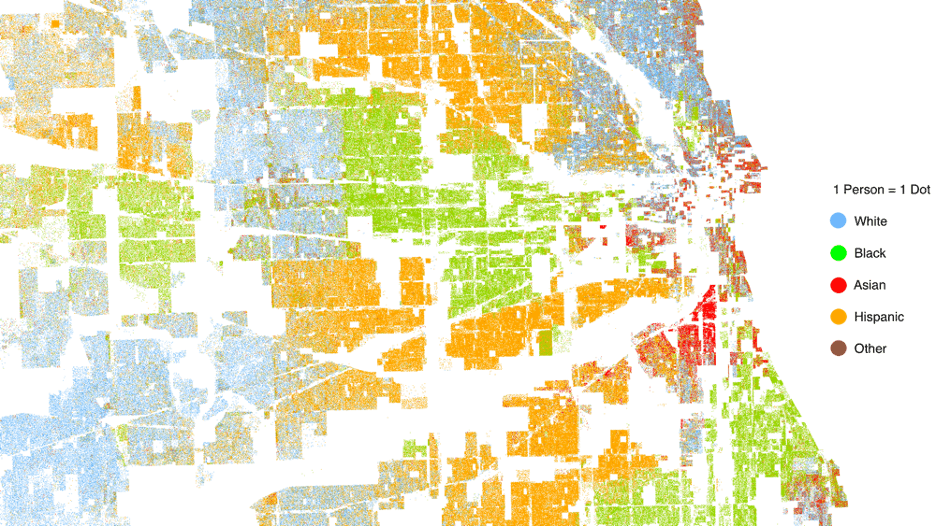Is agent-based modeling the future of behavioral science?
How has behavioral science shifted?
Nudging is as hot as ever. The application of behavioral science principles to real-world interventions has gained a huge popularity in the last 10 to 15 years. Admittedly, “nudging” and the wider family of interventions related to it have generated enormous amounts of impact at a relatively low cost (UK Pension auto-enrollment increased participation by close to 60%; FDA mandated calorie labeling in the states decreased daily calories consumed by about 100 on average, etc.). Given results like these, it’s not too surprising that people are excited about the approach (there are now over 500 “nudge units” across the world and counting). However, as with any scientific application, these first interventions have borrowed relatively simple principles from the behavioral sciences, focusing on easily modified frameworks such as biases or general rules about how people behave. This simplification has led to some failures and forced the field to advance.
As behavioral science research has come out on what works and what doesn’t, practitioners have learned that most findings don’t generalize as well as one might be tempted to suggest—increasing the importance and prevalence of running highly customized interventions. So, instead of just assuming that a signature at the top of a form is more likely to produce honest behavior because a (now proven dubious) experiment said so, a good practitioner might perhaps ask deeper questions like: what is the equivalent of a signature in the context of this app I’m working on? How can I more broadly define “honest” behavior to best measure impact? What kind of experimental design would allow me to see if this is an effective intervention?
What is agent-based modeling?
In 1971, Thomas Schelling published what is now considered a groundbreaking article (“Dynamic models of segregation”). He used a technique called a simple agent-based model (ABM) to simulate how people in a city would choose where to live based on their ethnicity. Agent-based modeling (ABM) is a way to simulate large complex systems by focusing on interactions between individual units—also called 'agents’. Each agent is programmed to follow certain rules and make decisions based on its environment, history, and interactions with other agents. By programming thousands of virtual agents using a very simple set of rules (e.g. stay where you are unless you are surrounded by a majority of agents different from you), Schelling showed that even when people are perfectly happy living in a mixed neighborhood, not wanting to be a minority would eventually push them toward complete segregation.

As you can see above, as time passes, the agents move around at each step and eventually self-organize into segregated communities. While this isn’t something you’d be easily able to predict just by knowing the psychology of each agent, it’s an emergent quality of the system. Sadly, this emergent quality is not too far from how real cities in the US have evolved over time (though, to be sure, there are other factors to consider there, such as redlining practices). For example, here’s Chicago:

Racial residential segregation in Chicago according to the 2010 census.
An ABM simulation usually happens along a series of steps. The model starts in some initial state and, at each step, the agents react based on their environment and the rules that have been set for them. For example, a purple agent might have the rule “if a green agent is adjacent to you, turn green.” The goal of these steps are to figure out what happens over the long run (for example, how many green agents there are at the end).
The easiest way to grasp this concept is to imagine a video game where every character has its own personality and makes decisions based on what's happening around them. In ABM, these characters (or agents) could be anything—people, animals, cells, even vehicles. Each one operates independently, but when you look at the system as whole, you see that their actions lead to larger patterns. A classic example of this is the patterns that a flock of birds produces when flying in sync (called “murmuration”). While each bird is just flying and minding its own business, the flock as a whole can display much more complex behavior.
Why is ABM useful?
ABM is a really powerful tool because it can show us how complex behaviors emerge from fairly simple rules. What’s interesting about this is that, while the conditions can be relatively straightforward, the behaviors that emerge can be incredibly unpredictable. This is why ABM has already been used for decades in fields like economics, biology, sociology, and urban planning to understand and predict how systems behave under different conditions.
For example, let’s say we’re trying to model a pandemic. We have a city with a certain number of people who do certain things every day. These people have “rules” like going to work, shopping, or using public transport. By running the simulation with these defined conditions, we can see how a disease might spread and how different measures could reduce its transmission. These kinds of insights can tell us what policies have a higher chance of working. Of course, reality will always be more complex than our models, but it at least lets us hone in on the right questions.
Most importantly, by using ABM, we are likely to uncover behavioral patterns that would otherwise be invisible to us. These emergent qualities are just that—they can only be observed at a large scale. Imagine studying how a single bird flies and somehow predicting the shape of murmuration that a flock of these birds would create. It’s simply impossible because the information isn’t contained in the individual—it’s contained in their interactions.
So how is this related to applied behavioral science?
While many interventions in applied behavioral science focus on the individual, decisions rarely happen in isolation. So we might design an intervention—for example, one that tries to promote reusable cups. We could do deep research and learn about the drivers and barriers that might relate to reusable cups. We might even start to create psychographic segments that differentiate between different groups of people based on those barriers and drivers. However, there is one factor in all of this that likely does not belong in a list of drivers and barriers: the interaction between people. While it might be tempting to just say “make it socially acceptable,” techniques like agent-based modeling allow us to actually figure out what that might look like in ways that, as we have seen above, might be invisible to us without using a model.
We know we can use ABM to study and predict behaviors in large groups of people. So, what types of business problems might require ABM? ABM is ideal for scenarios where individual decisions, interactions, and behaviors aggregate to produce complex organizational outcomes. This includes things like:
- Market Dynamics: Understanding consumer behavior patterns, market segmentation, and product diffusion.
- Supply Chain Management: Simulating and optimizing logistics, inventory management, and response to market changes.
- Organizational Behavior: Analyzing employee interactions, workplace culture, and change management.
- Risk Management: Assessing and mitigating risks in financial markets or operational procedures.
How can you know if your problem is the right fit for ABM?
Well for one, you could ask us. But besides that, your problem might be a candidate for ABM if it involves:
- Complex interactions between diverse agents (e.g., customers, employees).
- Emergent phenomena where the whole is greater than the sum of its parts.
- The need for dynamic modeling over static analysis.
- Scenarios where traditional analytical methods fall short in capturing the nuances of human behavior.
Agent-based modeling in action
Let's dive into some real-world applications of agent-based modeling that have not only showcased its versatility but have also led to tangible, positive outcomes.
- Controlling Epidemics: A prime example is the application of ABM in managing the spread of infectious diseases. Take the COVID-19 pandemic, for instance. ABM was instrumental in simulating the spread dynamics and assessing the impact of interventions like social distancing and lockdowns. This approach informed crucial policy decisions and public health strategies, proving pivotal in managing the crisis.
- Revolutionizing Urban Traffic: In urban planning, ABM has been a game-changer, particularly in traffic management. By simulating individual driver behaviors, urban planners have been able to predict and manage traffic flows more effectively. This approach has led to smarter traffic light systems and better overall urban mobility. Cities like Singapore have leveraged ABM to optimize their public transport and reduce congestion, enhancing the daily commute for millions.
- Decoding Financial Markets: In the world of finance, ABM has shed light on the intricate workings of financial markets. By modeling the decisions of individual traders, analysts have gained insights into collective market behaviors, helping to predict trends and potential crises. The 2008 financial crisis, for example, was dissected using ABM, offering valuable lessons on market dynamics and investor psychology during periods of financial instability.
- Guiding Environmental Action: In environmental science, ABM has been pivotal in ecosystem management and wildlife conservation. For instance, it's been used to simulate the impact of human activity on sustainable fishing by Dr. Jens Koed Madsen1 at the London School of Economics (he also happens to be a TDL advisor).
- Enhancing Customer Experience: In the retail sector, ABM has been used to improve customer service and store layouts2. By simulating customer behavior within a store, retailers have been able to optimize product placements and store designs, leading to enhanced customer experiences and increased sales. This practical application of ABM demonstrates its value in understanding and catering to consumer preferences in a dynamic retail environment.
Hopefully these examples show two things: first, that ABM is more than just a theoretical tool; second, that past applications have barely begun to scratch the surface of what ABM can actually offer.
What this means going forward
To sum up, is agent-based Modeling the future of behavioral science? Absolutely - in fact, for us at The Decision Lab, it’s the present. The journey of behavioral science, from its initial, simpler interventions to its current complex and dynamic state, vividly illustrates the growing importance of ABM. This evolution from a 'one-size-fits-all' approach to a more nuanced, experimentally driven practice underscores the significance of ABM in understanding and influencing complex human behaviors.
ABM stands out for its ability to illuminate the hidden dynamics of interactions within systems, whether in the context of market dynamics, organizational behavior, or even urban planning. Its strength lies in capturing the intricate dance of individual decisions and actions, revealing patterns and emergent behaviors that traditional methods often overlook. This makes ABM not just an addition to the behavioral science toolkit, but a transformative approach that redefines how we understand, predict, and ethically influence human behavior in complex environments.
For business leaders, policymakers, and scientists, ABM offers a compelling tool for finding a competitive edge in highly complex environments. It’s a tool that turns complexity into a comprehensible and manageable form, whether that’s in predicting consumer trends, optimizing supply chains, managing risk, or fostering effective organizational change.
If you’re working on some super complex problem that is trying to make the world a better place and are wondering how ABM might apply, we’d love to help.
References
- https://www.lse.ac.uk/PBS/People/Dr-Jens-Koed-Madsen
- https://www.sciencedirect.com/science/article/abs/pii/S0957417421006631
About the Author
Dr. Sekoul Krastev
Sekoul is a Co-Founder and Managing Director at The Decision Lab. He is a bestselling author of Intention - a book he wrote with Wiley on the mindful application of behavioral science in organizations. A decision scientist with an PhD in Decision Neuroscience from McGill University, Sekoul's work has been featured in peer-reviewed journals and has been presented at conferences around the world. Sekoul previously advised management on innovation and engagement strategy at The Boston Consulting Group as well as on online media strategy at Google. He has a deep interest in the applications of behavioral science to new technology and has published on these topics in places such as the Huffington Post and Strategy & Business.



